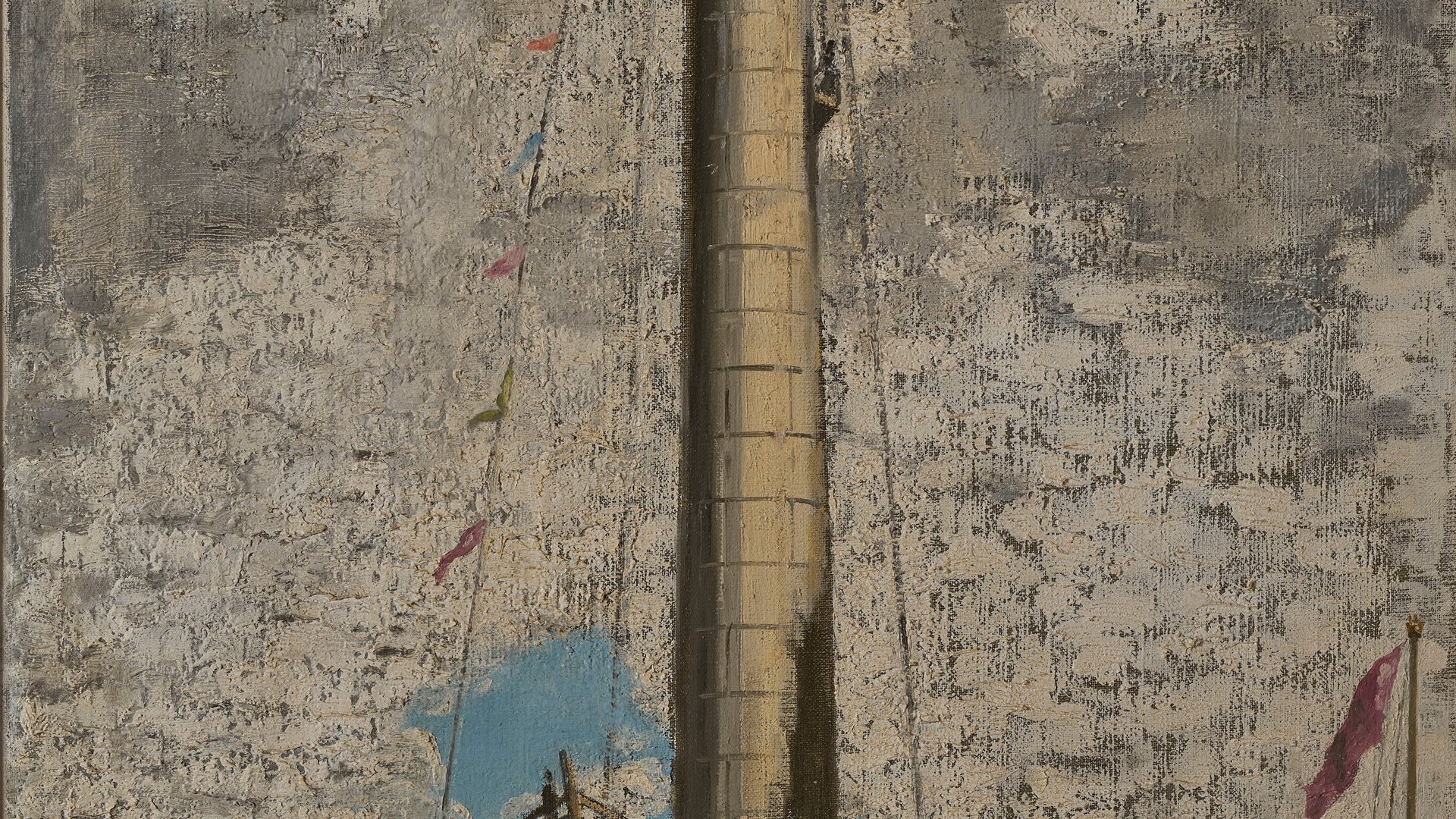

Provenance:
London, RSA, Modern art from Scottish Homes
Commissioned from the artist by Annie, later 1st Viscountess Cowdray, and by descent at Dunecht House, Aberdeenshire
London, RSA, Modern art from Scottish Homes
Commissioned from the artist by Annie, later 1st Viscountess Cowdray, and by descent at Dunecht House, Aberdeenshire
Exhibited:
London, The Fleming Collection, Rascals and Ruins: The Romantic Vision of James Pryde, 12th September - 16th December 2006, no. 52.
London, The Fleming Collection, Rascals and Ruins: The Romantic Vision of James Pryde, 12th September - 16th December 2006, no. 52.
Literature:
C. Powell, exhibition catalogue, Rascals and Ruins: The Romantic Vision of James Pryde, London, 2006, p. 76-7, illus.
C. Powell, exhibition catalogue, Rascals and Ruins: The Romantic Vision of James Pryde, London, 2006, p. 76-7, illus.
The inspiration for this work, painted c. 1910, has been linked to two commemorative monuments in cities lived in by Pryde: the Melville Monument in St Andrew Square, Edinburgh, of 1823, and the Duke of York’s Column in London, dating from the early 1830s. It is, in fact, a very faithful representation of the latter, as seen looking up the Duke of York’s Steps from The Mall. The figures in period costume suggest a reference to its completion and unveiling and it was, indeed, originally referred to in correspondence and documents as The Unveiling of the Duke of York’s Column. The subject would have appealed to the Cowdray’s since their London residence at the time of Pryde’s work was 16 Charlton House Terrace, which lies a stone’s throw to the right of this scene. Lady Cowdray (then Lady Pearson) asked Pryde to make a watercolour of the same subject in the visitor’s book for that house. He, finding the paper in the book unsuitable, drew it on a separate sheet and pasted it in.
Lady Cowdray paid £500 for the painting and probably acquired it in 1910.
It is painted on canvas from Chenil Gallery in Chelsea and bears the gallery’s distinctive palette-shaped mark; Pryde had a close relationship with the Chenil throughout the twenty years of its existence, 1906-27, and his works were often exhibited there. On 9 May 1911 Pryde wrote to Lady Cowdray, requesting the work back for inclusion in his one-man exhibition at the Baillie Gallery in Bruton Street, opening that very month. It was not included in that show for a very simple reason: in his hate he sent her letter to the Cartwright Hall Art Gallery in Bradford (see The Shell) and vice versa.
Construction and its pendant Destruction owe their ultimate titles to their location in the Library at Dunecht: they flanked the entrance door, Destruction to the left as seen from the room itself, and Construction to the right. They thus relate to the buildings in Pryde’s great lunette high above them, where the left-hand structure is dramatically more ruinous and darker than that on the right. Their titles may, in fact, derive from family nicknames for the works; Lord Cowdray’s remarkable business career lay in the field of construction and the biblical quotation (Proverbs 16:18) Pride goeth before destruction’ would have been familiar to the artist
Lady Cowdray paid £500 for the painting and probably acquired it in 1910.
It is painted on canvas from Chenil Gallery in Chelsea and bears the gallery’s distinctive palette-shaped mark; Pryde had a close relationship with the Chenil throughout the twenty years of its existence, 1906-27, and his works were often exhibited there. On 9 May 1911 Pryde wrote to Lady Cowdray, requesting the work back for inclusion in his one-man exhibition at the Baillie Gallery in Bruton Street, opening that very month. It was not included in that show for a very simple reason: in his hate he sent her letter to the Cartwright Hall Art Gallery in Bradford (see The Shell) and vice versa.
Construction and its pendant Destruction owe their ultimate titles to their location in the Library at Dunecht: they flanked the entrance door, Destruction to the left as seen from the room itself, and Construction to the right. They thus relate to the buildings in Pryde’s great lunette high above them, where the left-hand structure is dramatically more ruinous and darker than that on the right. Their titles may, in fact, derive from family nicknames for the works; Lord Cowdray’s remarkable business career lay in the field of construction and the biblical quotation (Proverbs 16:18) Pride goeth before destruction’ would have been familiar to the artist